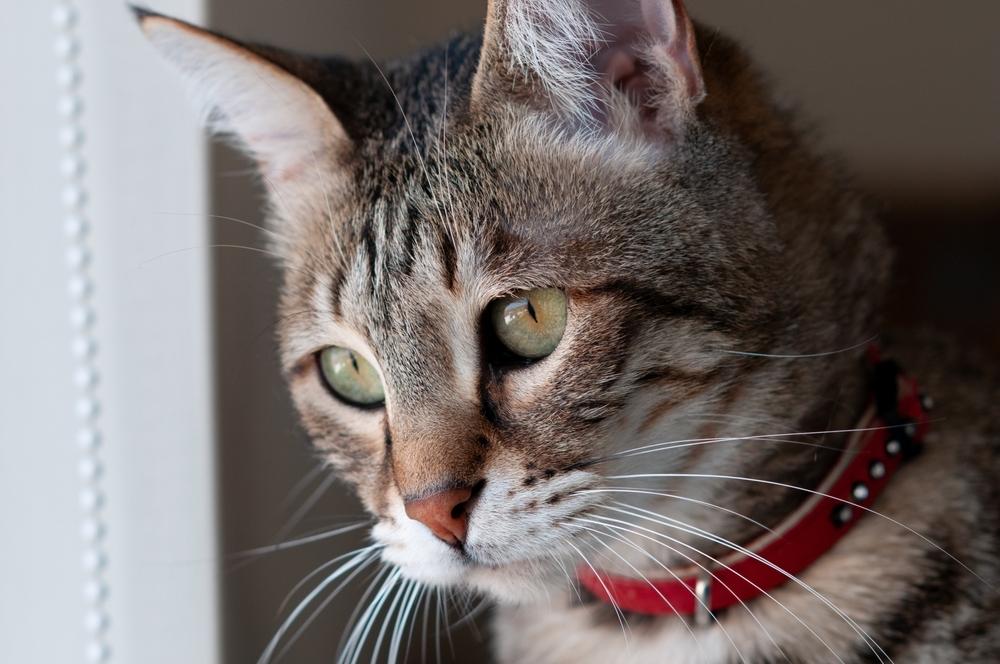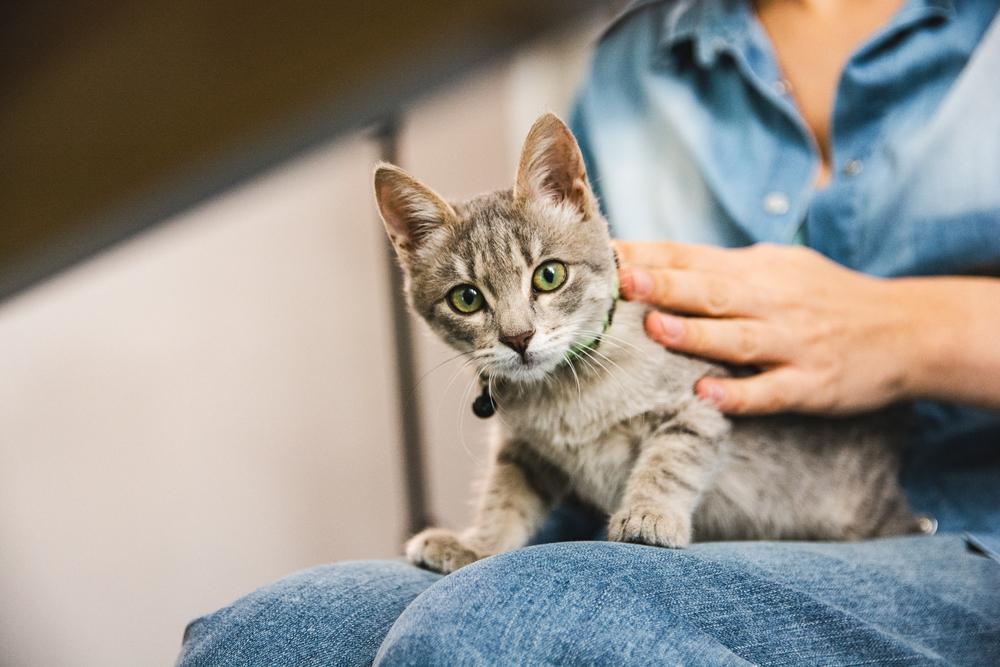

You're running your hand over your cat's silky coat as they purr contentedly in your lap when suddenly you feel a bump — one that wasn't there yesterday. You lean in for a closer look — what is it? Should you be worried?
While discovering a new bump on your cat can be concerning, there's no need to panic. The best thing you can do is schedule a visit with your veterinarian, who can examine the bump and determine whether it requires treatment. It may be a harmless growth, like a skin tag. While skin tags on cats are relatively rare, they do occur.
Read on to learn more about feline skin tags, including what they typically look like, where they often appear and what to do if you find one.
The short answer is yes: While skin tags are more common in dogs, cats can get them, too. A skin tag is a benign, flesh-colored growth made up of fibrovascular connective tissue. It may appear as a small bump or a dangling piece of skin. Skin tags typically grow slowly and often remain the same size once they develop, but they can sometimes become ulcerated, infected or irritated. In cats, skin tags most commonly appear on the chest, bony areas, armpits, neck and face.

Causes of Skin Tags on Cats
While the exact cause of feline skin tags isn't fully understood, one theory suggests they may develop from repeated rubbing or minor trauma to the skin. Genetics could also play a role, as skin tags are believed to be more common in Persian cats. They're also seen more frequently in older cats than in younger ones.
Skin tags are typically benign, non-infectious and non-cancerous — but not all growths are skin tags. Other conditions, including cancerous tumors, warts, cysts or even attached ticks, can be mistaken for a skin tag. If you notice an unusual growth on your cat, it's important to have it evaluated by a vet.
Types of Feline Skin Tags
The common term "skin tag" typically refers to a benign growth called a fibroepithelial polyp, which consists of fibrous connective tissue and skin. These growths are generally soft, flesh-colored and slow-growing. In addition to fibroepithelial polyps, other types of skin tag-like growths reported in cats include:
Sebaceous tags: Associated with overactive sebaceous (oil) glands
Hyperkeratotic tags: Caused by an overproduction of keratin, resulting in a thicker, rougher surface
Because these different types of growths can look very similar to the untrained eye — and because some malignant tumors or infectious lesions can mimic the appearance of a benign skin tag — only a vet can properly diagnose and classify these skin growths. Schedule an appointment so your vet can guide you on what steps to take next.
What to Do If You Find a Skin Tag on Your Cat
If you notice any changes or unusual bumps on your cat's skin, consult your vet to get the area checked. Remember that many types of growths can look like skin tags, and an accurate diagnosis is essential for proper care. Your vet may perform a physical examination, fine-needle aspiration or even a biopsy to accurately diagnose the growth.
In the meantime, avoid touching or irritating the growth. Never attempt to remove it yourself, as this can cause pain, infection and complications.
Treatment Options for Feline Skin Tags
Most skin tags don't require treatment unless they're causing your cat discomfort or distress. In many cases, your vet will recommend monitoring the skin tag at home for any changes. If you notice the skin tag changing in size, color or shape, notify your vet promptly.
If removal is necessary, your vet can safely remove the skin tag through various methods, such as surgical excision, laser therapy or cryotherapy. Your vet will recommend the best approach based on your cat's specific situation

Tips for Preventing Skin Tags on Cats
While you can't completely prevent skin tags on cats, you can take a few proactive steps to minimize the likelihood of benign skin growths:
Keep your cat at a healthy weight to minimize skin folds and rubbing.
Regularly brush your cat and inspect their skin for any changes.
Feed them a complete and balanced food to support proper nutrition.
Ensure your cat's collar fits properly and is comfortable.
Schedule annual veterinary exams to catch potential skin issues early.
By following these strategies, you'll not only help keep your cat's skin and coat healthy and looking their best, but you'll also strengthen the bond you share. Regular grooming, attentive care and proactive health checks offer valuable opportunities to detect potential issues — from skin tags to more serious concerns — helping your cat stay comfortable, happy and thriving. Remember, a little extra time spent caring for your cat's skin today can make a big difference in their overall well-being for years to come.




















